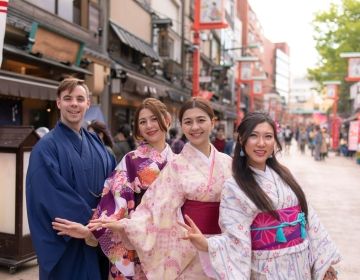Disability in Japan
I've now been to Asia six times, five in Vietnam and one in Japan, and one striking feature I've noticed are face masks. More prevalent in Vietnam, they're still a presence in Japan, and it's triggered a question in my mind: how do deaf people read hearing people's lips when communicating with them? Facial expression is a crucial element in non-verbal communication, containing clues that help a deaf person decipher what is being said and done to him or her. Masks conceal not just the lips but also the facial expressions that help clarify what is seen on the lips. So I suggest a solution: clear, transparent face masks! I would not recommend face masks for surgeons and other doctors because of the risk of miscommunciation in the health care field, something that is not acceptable or necessary. But for two friends on an outing or in the classroom, a face mask would not bar the deaf person from reading lips or otherwise communicating via facial expression. So how about encouraging the use of transparent face masks? Proof of the pudding is in the eating, and I've had no problem communicating with someone in a mask if they either remove it or use a transparent one.
Related Posts

24 Hours in Tokyo: A Global Intern's Guide to Japan
When you are a Global Intern in Tokyo, the possibilities are endless. From beautiful landscapes and lush green spaces by the water, historic landmarks, and fresh seafood galore, there is... keep reading
Visit to the Hiroshima Peace Memorial Museum
Today, August 1, 2018, my group of students and I visited the Hiroshima Peace Memorial Museum. As we approached the front entrance, a woman ran up to me and handed... keep reading
Student on the Disability in Japan Program Begin Their Journey
A group of students from Syracuse University in Syracuse, NY, and California State University Northridge just north of Los Angeles, California, led by Dr. Michael Schwartz, faculty leader from Syracuse... keep reading